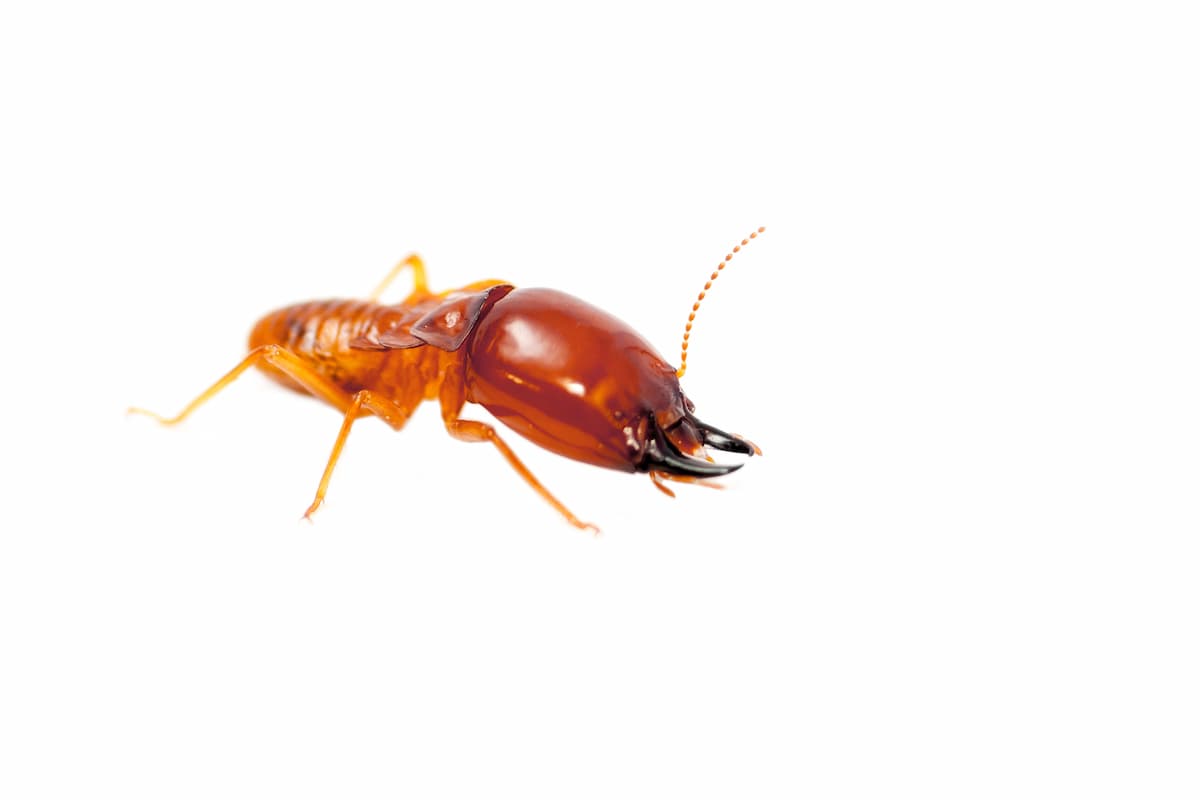Does Washing Clothes Kill Termites?
Termites eat almost anything, including your clothes. Holes in your clothing might signify an infestation inside your wardrobe.
The damage might be too extensive for specific garments, but you might be able to salvage others by getting rid of the insects.
Washing is one way to get rid of the termites on your clothes. However, it’s not reliable. Drying the garments is better as the heat from the process will overwhelm the insects, killing most, if not all, of them. You can also expose your clothes to sunlight for a few hours if you don’t have a dryer. The effect is the same.
Why Termites Eat Clothes?

Termites eat clothes because they contain cellulose, a naturally-occurring compound in several products, including cotton, paper, and wood.
Being the most abundant organic compound on Earth, termites have little to worry about in the food department.
However, the materials must also be soft enough to chew into, explaining their preference for moist wood and their likelihood of invading your clothes.
Termites suck the cellulose from their food, leaving holes in your clothing (and wood). Natural fabrics susceptible to termite attacks include cotton, flax, and jute, while rayon is the most common synthetic fabric with cellulose.
Termites get in your wardrobe mainly through the walls and old garbage like newspapers and wood. If the termites are in the wood in your home, you must implement effective control measures in the rest of your house, not just your room.
Signs of Termites on Clothes
Termites are not the only insects that can tear up clothing. Cockroaches and silverfish are also a common nuisance, and you must ensure that you’re dealing with termites before taking further action. The following signs indicate a termite infestation;
Mud Tubes
Clear evidence of mud tubes in your closet means the critters have set up camp. Termites build these tunnels to connect their nests to their food source.
Because they rely on your clothes (and probably your wooden wardrobe) for food, treating these tubes will eliminate the colony.
Holes in Clothes
Circular holes in your clothing are good evidence that you’re dealing with termites; however, they’re not the deciding factor as most garment-eating insects also leave holes in clothes.
You have substantial evidence of termites if some holes have mud inside. Mud in your clothes is evidence because termites fill these pinholes with mud when sucking out the cellulose from the garments.
Shed Wings
Seeing discarded translucent wings in your wardrobe or clothes is evidence of a termite infestation.
Swarming is the primary cause of wing loss in termites. That’s when mature adults leave their colony to form a new one. These adults reproduce and shed their wings to signify the start of a new colony.
It’s an excellent time for mature termites, but it results in a big mess (and infestation) in or outside your home.
Sawdust
Termite droppings, also known as frass, resemble wood dust. They’re pellet-shaped if you take a closer look but are similar enough to shavings to have you mistaking them.
Frass is droppings from drywood termites. If you’re in the northeast, you’ll likely encounter subterranean termites and won’t see their droppings.
They use their waste to build mud tubes, highlighting the importance of not relying on “shavings” as the only sign of an infestation.
How to Remove Termites from Clothes?

Washing is one way to remove termites from your clothes. However, there are various other alternatives, and weighing the pros and cons of each helps you determine the most reliable extermination method.
Borax
Borax or sodium borate is an accessible chemical that’s effective against termites. There are three ways to apply sodium borate:
- Sprinkle it in your laundry and wash your clothes
- Mix it with water and spray the solution over your clothes
- Sprinkle it directly on the garments and affected areas
Each method works differently, but they all ensure you eradicate the termites in your room.
Borax is safer than commercial insecticides, but you should be careful when using it around babies and pets.
You should also wear gloves during application to avoid skin irritation.
Vinegar
Vinegar is a more cost-effective solution to a termite infestation. Mix a cup of it with the juice from two lemons and spray the solution on your clothes.
Sunlight or Dryer
The heat from the sun is another cost-effective way of exterminating termites.
Leaving your clothes in direct sunlight for a few hours makes the insects die from the excess exposure.
You can also take out furniture and items you suspect to host termites to avoid breeding in your home.
A dryer is just as effective as sunlight. It kills the insects through heat and is a viable alternative when experiencing rain.
Orange oil
Orange oil contains d-limonene, a citrus-smelling liquid that’s fatal to termites. The oil is extracted from oranges and sold in home improvement stores or online.
It works by damaging the insect’s exoskeleton. However, it’s not reliable against subterranean termites.
You should also not spray it directly on your clothes. Instead, apply it to specific areas around your wardrobe.
Regularly reapply it if dealing with a large infestation as it loses its power quickly.
Preventing Termites on Clothes
Effective termite management is not only successfully controlling an infestation but also taking precautions to prevent the insects from coming back.
Washing clothes and not piling dirty laundry is the easiest way to avoid a termite infestation in your wardrobe.
Also, consider why termites are getting into your house. Your garments are unlikely to be the primary reason. If you leave out your wood or store cardboard boxes in the corner of your garage, you give the insects unlimited cellulose.
Getting them to leave requires thoughtful organization.
Do not store your firewood against foundations. Instead, keep it a few feet away from any buildings. Something else that would help is if you raised the firewood a few feet off the ground.
Get rid of items you don’t use, especially if they contribute to the moisture accumulation around your house foundation. Wetness is integral to swarming termites, which is why they mostly visit during rainy seasons.
Fixing your house’s drainage and investing in quality ventilation systems ensures you keep this moisture out.
Regular termite inspections are adequate if you’re prone to infestations. The exterminators will guide you in dealing with the many swarms that visit throughout the year. Though costly, they’re worth a try if you think your situation beats the average homeowner’s.
Conclusion
It’s never fun to come home and see your clothes torn up by some unknown creature.
Specific clues tell you whether you’re dealing with termites, and you should take immediate action to get them out of your room.
The insects mostly come from a different house areas, and you should check your entire house for a potential infestation.
Aside from treating your clothes, remove all furniture you suspect hosts the insects and implement any of the listed control methods. Doing so ensures the termites in your living room don’t find their way to your kitchen.
Call a professional if you feel your situation is beyond what you can handle. Pest control companies are not cheap, but they ensure you stay termite-free for longer.
